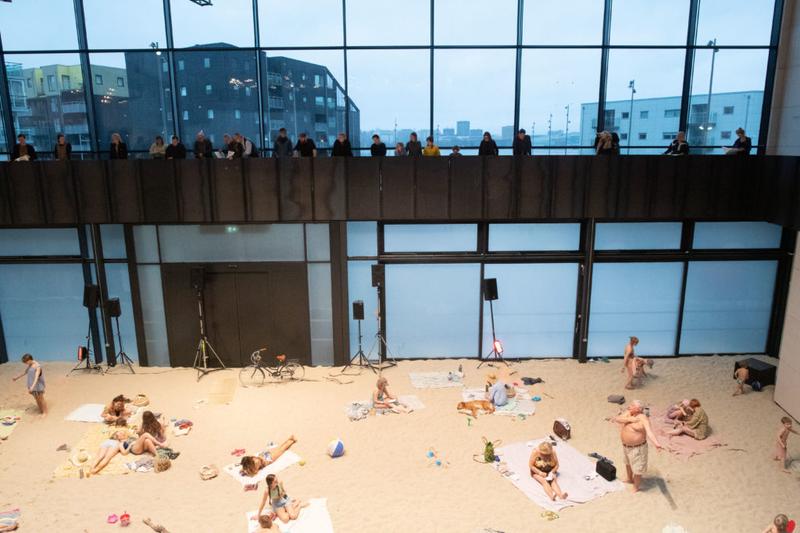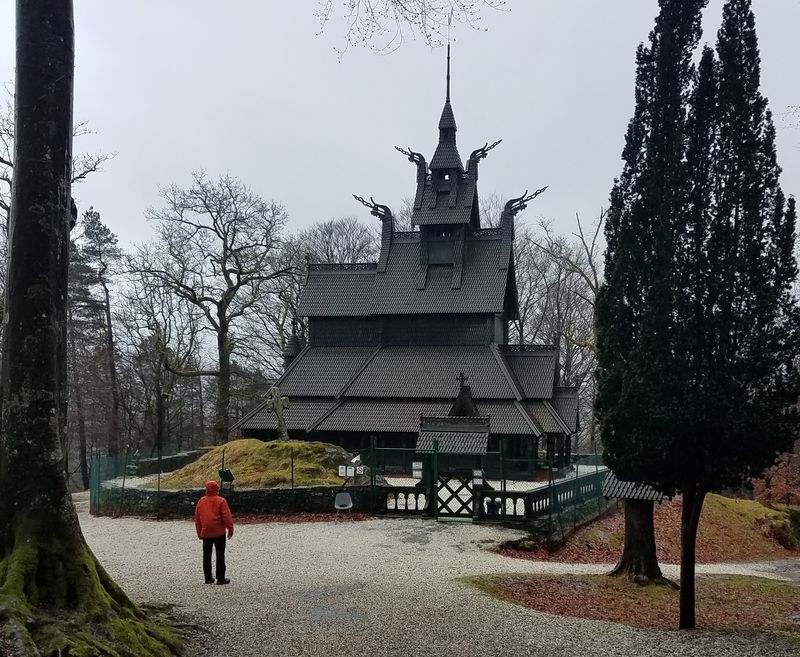
By Caryn Havlik
This past weekend’s pictures of crowds swarming to American beaches and lakes (with a certain amount of social irresponsibility) reminds me of a perhaps similar, equally surreal, beach scene from March. It was an indoor exhibition in Bergen, Norway, at the annual Borealis Festival. There, I witnessed another distant beach holiday - actually, the setting of a cyclical opera installation - as part of the work, Sun and Sea. More about that in a moment.
The Borealis Festival itself (est. 2006) is a thoughtfully-curated extravaganza of boundary-crossing experiments in music and art. It turned music halls, churches, art spaces, libraries, and venues in the city of Bergen into inspirational spaces, questioning privileged structures and actually opening the festival to more folks than they usually reach - which is also perhaps why I was there. With multimedia presentations using music, dance, sound installations, performance art, and the non-traditional venues themselves, it was a chance to come together and experience the work of composers, artists, and musicians. Yes, the before times...
But, getting back to the dream of the beach… the opera, Sun and Sea, presented at the University of Bergen School of Fine Art, Music, and Design, was an ingenious performance installation where viewers could “daydream through the climate crisis” - floating above it all as spectators. Composed by Lina Lapelytė with a libretto by Vaiva Grainytė and directed by Rugilė Barzdžiukaitė, Sun & Sea was a winner of the Golden Lion as part of the 2019 Venice Biennale. The work combines music, opera, theatre, and art, and is a critique of leisure and of our times living with the climate crisis, sung by a cast of trained operatic performers and fleshed out by some volunteers. (When I viewed it, on that Sunday in March, some of the hosts and organizers of the Borealis Festival were in cameo volunteer roles with their families, just enjoying a day at the beach at a somewhat safe distance from others…)
Really, it was such an unusual perspective to have, peering down, almost blasphemously high and mighty, into something like a live diorama. One could walk around the entire enclosure, and look (or not) at the printed bound copies of the librettos, strategically attached to points around the bordering ledge, or look out at the rain through giant glass windows, or look over the shoulder of the lighting designer as they worked right at spectator level, looking down to make changes as different performers sang their parts. There was also a sporting thrill in trying to locate from above the singer or singers performing without the obvious help of a follow-spot in a darkened theater.
The music itself was full of simple riffs, motifs and tonal harmonies, with a minimal electronic keyboard-based score supporting a collection of tales told from multiple perspectives. Chattering people would tell and re-tell their stories in pop-song-sized durations (not unlike the Robert Ashley television opera, Perfect Lives or perhaps Laurie Anderson's pop-opera opus, United States.) Originally written in Lithuanian, it was translated into English for the Venice Biennale. Hilarious texts from everyday people about workaholism, “songs of complaint,” or even the songs of a privileged “wealthy mommy,” were interspersed with observations about global trade, and increasingly more alarming songs about lava and volcanoes, and how bees and coral reefs are dying out. The work consists of 24 sections in a cycle of 63 minutes, and is performed continuously, as the instrumental accompaniment loops over and around.
It’s easy to get too teachy or preachy in art about climate change, but harder still to be intense and subtle, yet entertaining and thoughtful about it. This “beach opera about climate change” (not my phrase, but thanks, Earthday.org) managed to be simultaneously mundane and light, yet wise and deadly serious, as one considers how the micro becomes macro. There is a recording available, with lyrics [https://sunandsea.bandcamp.com/releases], as there is still so much to chew on about the performance and its implications as one contemplates how our laziness, resignation, and/or inaction will lead to the end of the world.
Intermission = excursion
After this performance, there was a pilgrimage on foot, uphill, in a cold driving rain, to visit the nearby reconstructed Fantoft Stave Church. You know, one of the churches built with interlocking pieces, and wooden dowels (no nails), dating from the early adoption of Christianity, around 1150. Also, this particular church was one of the first in a string of church burnings by members of the early Norwegian black metal scene in the 1990s.
This is our last dance...
One of the last performances that I witnessed before the world shut down, later that same March Sunday, was not at all beach-related. I’m Not Dancing, I’m Fighting was the program by F* Choir, a London-based all-genders feminist choir that performs non-traditional arrangements and originals with an irresistible uplifting energy and utterly engaging appeal. They don’t hold auditions, nor do they use sheet music, having devised alternate methods to achieve their intertwined goals - musical and societal radicalism. Their leader, Jenny Moore, is a drummer and composer who writes for maximum collaboration, inclusivity and openness, and seems to embody the rewarding joy that community singing can bring.
Note: As a Borealis artist-in-residence, Jenny Moore also led a series of talks, open workshops and physical pursuits (boxing, yoga, a fjord swim) called “Doing, not Saying,” with the aim of using active methods of engagement in order to take on racism and sexism, working to bring about equality and social change.
With glowsticks and glowing elements in their costumes on the evening of March 8, the choir definitely made an entrance, bringing a sense of fun, openness, and power to the risers that served as a stage at the art gallery KODE 2. Most of the singers shifted places during the set, frequently switching into other voice sections, in keeping with their freeing method of non-gendered voice parts. Plus, there was the added bonus of body percussion beyond stomps and claps, in addition to a few jazz hands. With well-considered repertoire including Meredith Monk, Planningtorock, PJ Harvey, Ibeyi, two originals by Jenny Moore, and an arrangement of Tirzah and Micachu (Mica Levi) after whose song the program was titled, there was just so much joy shared!
I hold this performance by F* Choir most dear in this age of social distancing and the difficulty of safe communal music-making. At a time where we (in NYC, at least) can no longer gather, I thank the Borealis Festival for having presented such a varied, challenging, and uplifting program, and for having given me such a poignant memory for my mind palace.

